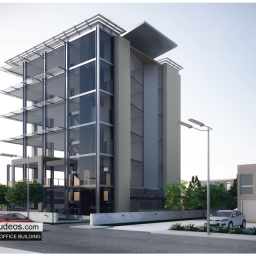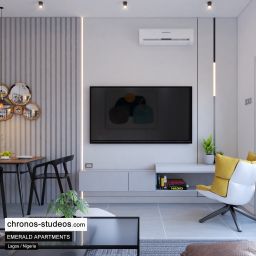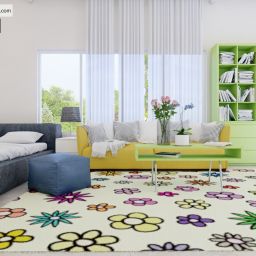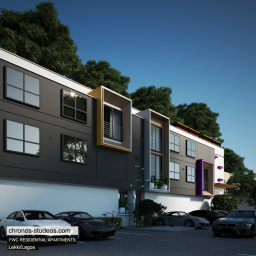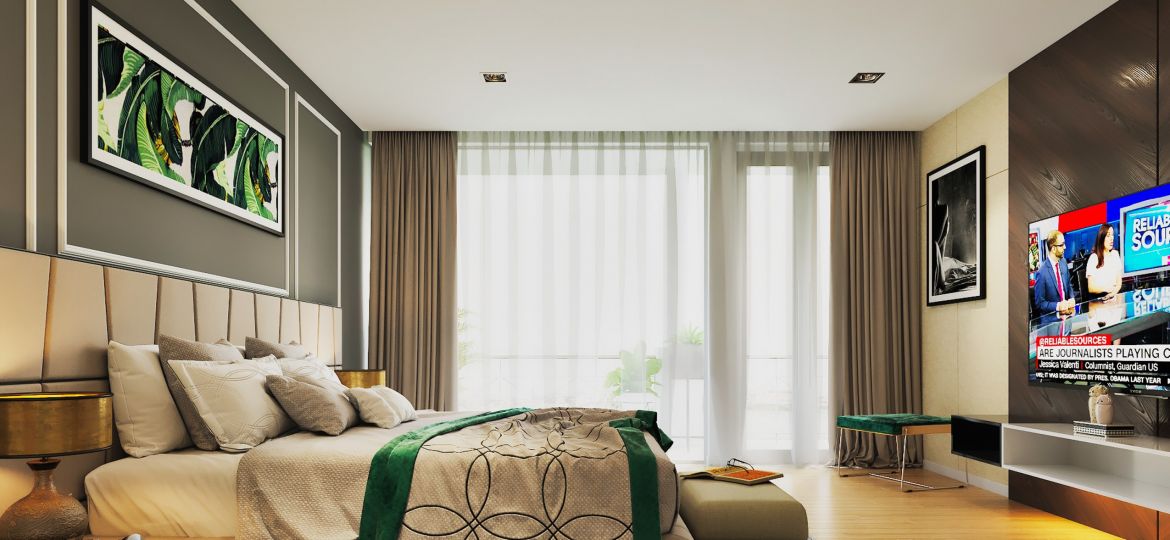
Many may be familiar with 3D renderings, however, there’s more to it than meets the eye. A successful off-plan real estate transaction largely depends on how well the property seller can paint a convincing picture of what the “ideal home” looks and feels like, to an interested buyer. That’s the power of a well-rendered 3D image, unlike traditional images or blueprints, which are also quite important.
In this article, we’ll explore the benefits of 3D Visualization for both buyers and real estate companies.
But first…
What is 3D Visualization, and how does it work in real estate?
3D visualization is the process of creating realistic three-dimensional images or animations from a digital model. It provides a detailed glance at various aspects of a building even before the actual development process is completed. Think visual renders of interior and exterior designs, structural layouts, materials, textures, and so on.
Here’s how a typical 3D visualization process works for a real estate property:
- First, the property model is generated based on the architectural design drawings which specifies the building dimensions, materials, and other design specifications. This process usually involves a few drafts, reviews, and adjustments until the final model is released. The 3D model could take on different forms like static renderings, 360-degree tours, or even virtual reality productions.
- Real estate companies can then use the generated visuals as a marketing tool, which allows potential homeowners to explore the property remotely. This is particularly useful for properties under construction, selling to prospects in a different country, or even showcasing renovation possibilities.
3 Benefits of Real Estate 3D Visualization
Today’s real estate market is very competitive. Clients for commercial real estate want to ensure that they’re investing in the ideal structure for their needs. Real estate companies, therefore, become responsible for matching these expectations with tangible proof.
Since selling off-plan real estate is typically a business that relies on future outcomes— for instance, what an ongoing building project would look like— it only makes sense to appeal to the prospect’s ability to imagine or visualize desirable outcomes. That’s where 3D visualizations come in. Let’s now explore the various ways that 3D visualization elevates the real estate experience:
01. DESIGN AND TECHNICAL direction
On the design and technical side, 3D visualization allows developers to create more functional spaces. This is because they get to see a realistic depiction of ideas and concepts before actual construction begins.
Coupled with other crucial steps in the building design process like Floor Plan Development, Building Information Modeling (BIM), Generative Design, and so on— 3D visualization can help to make more informed design choices.
3D visualization also helps to improve collaboration for those involved in bringing the project to life. Key stakeholders like engineers, architects, interior designers, and other contractors have a visual guide highlighting important details of the finished look. That’s one way construction teams can eliminate potential misinterpretations.
Finally, being able to visualize buildings can help to identify design flaws or functionality issues that may have been obscure from blueprints or sketches. These issues can then be corrected before the actual construction process, saving unnecessary costs that would have been incurred otherwise.
02. buyer experience and perception
Imagine stepping into a property without leaving your home. That’s precisely what 3D visualization offers. Buyers can virtually explore every nook and cranny of a house, from the cozy living room to the sun-kissed garden. This way, real estate companies can make it easier for potential buyers to envision themselves in the space— even when they’re far away.
Additionally, with 3D visuals, buyers no longer have to struggle with deciphering floor plans or trying to grasp 2D sketches. This is because 3D visualizations provide a clearer understanding of property layouts. They can visualize room sizes, flow, and spatial relationships.
Also, 3D visualizations, when extended to Virtual Reality, become immersive. This means that viewers can virtually engage with the spaces. For instance, they can move between rooms and explore the functionality of different areas. So, there’ll be little to no surprises during in-person visits.
03. Connection with surrounding property
Beyond the property itself, potential buyers also desire to get a good glimpse of the surrounding environment. 3D visualization helps to capture the essence of an entire structure, providing a better view of the atmosphere, neighborhood amenities, landscaping, and so on. These visuals help to precisely portray the lifestyle associated with a particular property. This can also foster a deeper understanding of the property’s present and future value.
For example, the exterior 3D renders of the Emerald Apartments reveal a serene and luxurious atmosphere— something that’s likely to appeal to potential residents and potentially increase value in the future.
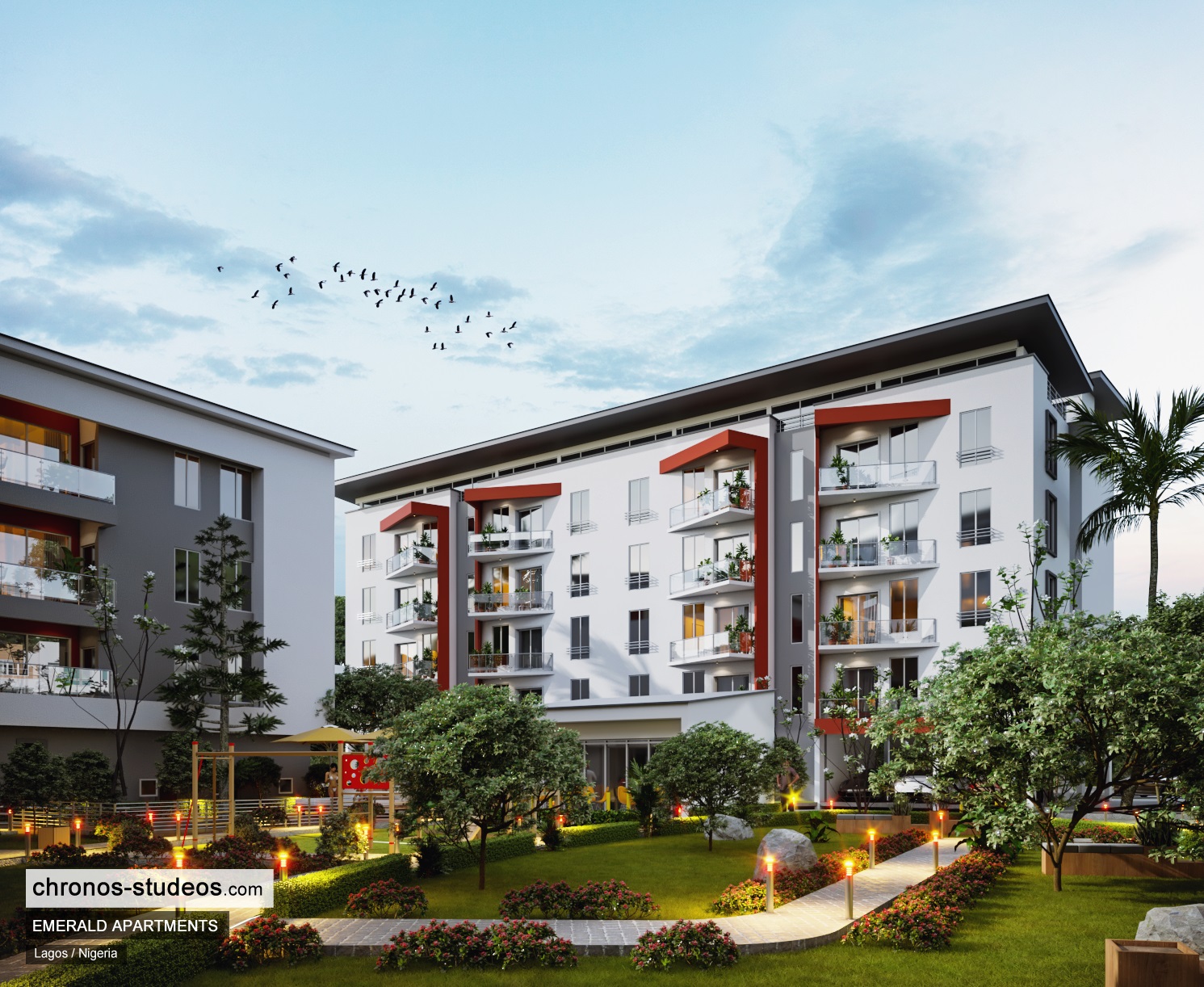
Ultimately, the idea of capturing outstanding environments is to empower buyers to make informed and confident purchasing decisions.
Real Estate 3D Visualization Case Studies
We’ve gone over some key ways 3D visualizations can be beneficial to real estate companies. Now, let’s go on to see how it’s been effectively used by some of our clients:
Emerald Apartments by LandAfrique
Chronos Studeos collaborated with LandAfrique on showcasing their Emerald Apartments project. We crafted detailed and immersive 3D visualizations of various apartment spaces. These visuals were showcased on LandAfrique’s website, allowing potential residents to explore both the interior design of their future homes and the lush environment.
The captivating static renders we presented gave a good glimpse into key areas like cozy bedrooms, aesthetic living areas, and inviting communal spaces. This, in turn, contributed to creating a remarkable and comprehensive experience for potential residents.
5ly SoHo Loft by Ave Maria Development Limited
The 5LY SoHo Loft is another fascinating example of 3D visualization in action. Originally envisioned by Ave Maria Development Limited as a multifamily structure, we collaborated with them to create 3D models—these models were used to showcase the proposed structure to potential investors and buyers.
However, the project eventually encountered a shift in purpose. Instead of residential apartments, the building was repurposed to serve as an office space, leading to a major adjustment to the initial design. Nonetheless, we still had top-quality 3D models reflecting the new office layout. This allowed Ave Maria to effectively communicate the updated vision and functionalities to potential investors and users.
Conclusion
3D visualization is more than a trend —it’s a necessity for real estate companies that wish to thrive in a dynamic real estate market. Today, we’ve seen how powerful 3D renders and visuals can effortlessly connect potential buyers to their ideal homes. We’ve also seen how it can help realtors communicate the vision they have for a particular building project in a creative and engaging manner— and how it can help property buyers or investors make well-informed choices.
Ultimately, embracing the effectiveness of 3D visualization is a step in the right direction as the real estate environment becomes more competitive.








































